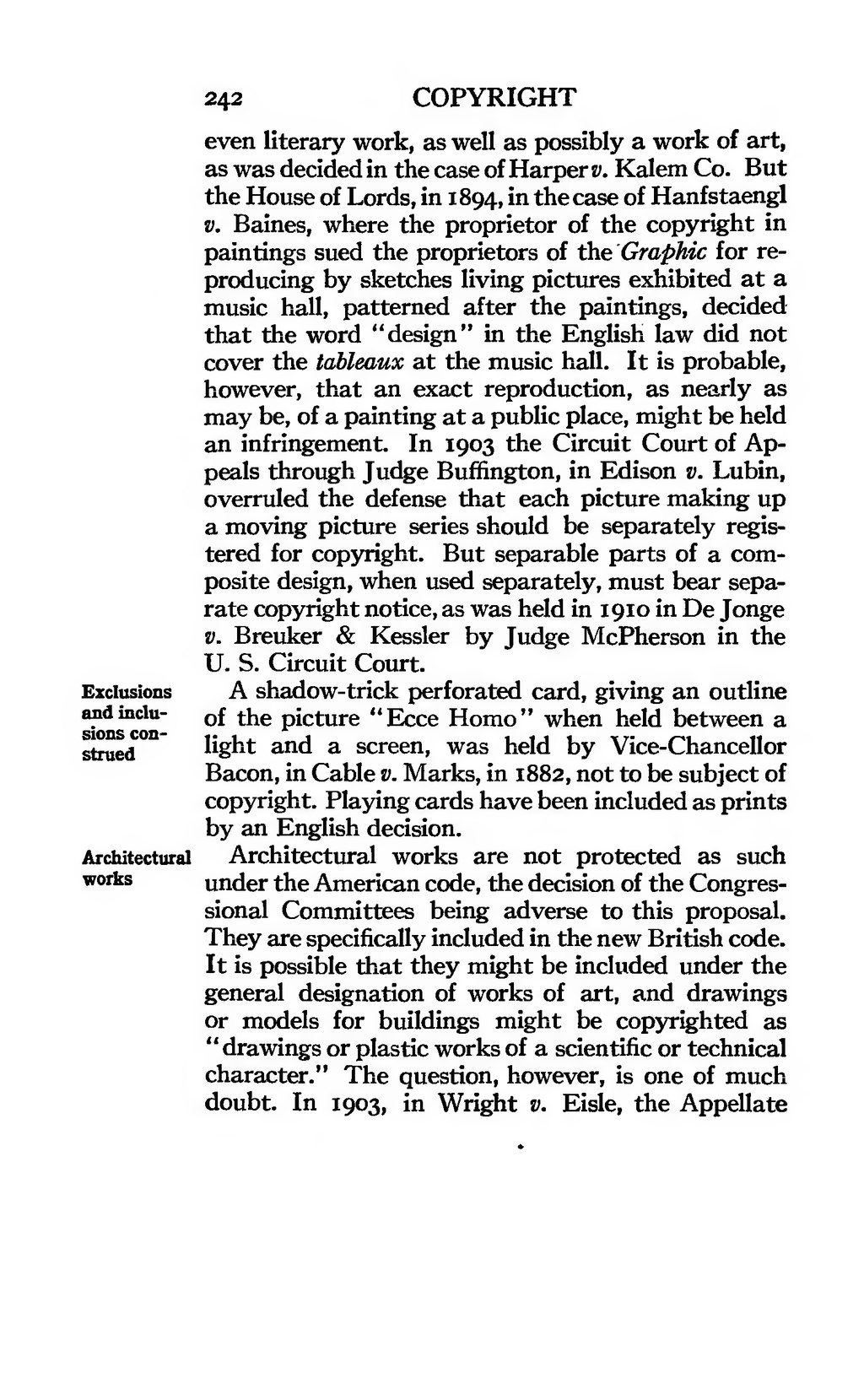even literary work, as well as possibly a work of art, as was decided in the case of Harper v. Kalem Co. But the House of Lords, in 1 894, in the case of Hanf staengl v. Baines, where the proprietor of the copyright in paintings sued the proprietors of the Graphic for reproducing by sketches living pictures exhibited at a music hall, patterned after the paintings, decided that the word "design" in the English law did not cover the tableaux at the music hall. It is probable, however, that an exact reproduction, as nearly as may be, of a painting at a public place, might be held an infringement. In 1903 the Circuit Court of Appeals through Judge Bufi&ngton, in Edison v. Lubin, overruled the defense that each picture making up a moving picture series should be separately registered for copyright. But separable parts of a composite design, when used separately, must bear separate copyright notice, as was held in 1910 in De Jonge v. Breuker & Kessler by Judge McPherson in the U. S. Circuit Court.
Exclusions
and inclu-
sions con-
struedA shadow-trick perforated card, giving an outline of the picture "Ecce Homo" when held between a light and a screen, was held by Vice-Chancellor Bacon, in Cable v. Marks, in 1882, not to be subject of copyright. Playing cards have been included as prints by an English decision.
Architectural
worksArchitectural works are not protected as such under the American code, the decision of the Congressional Committees being adverse to this proposal. They are specifically included in the new British code. It is possible that they might be included under the general designation of works of art, and drawings or models for buildings might be copyrighted as "drawings or plastic works of a scientific or technical character." The question, however, is one of much doubt. In 1903, in Wright v. Eisle, the Appellate
